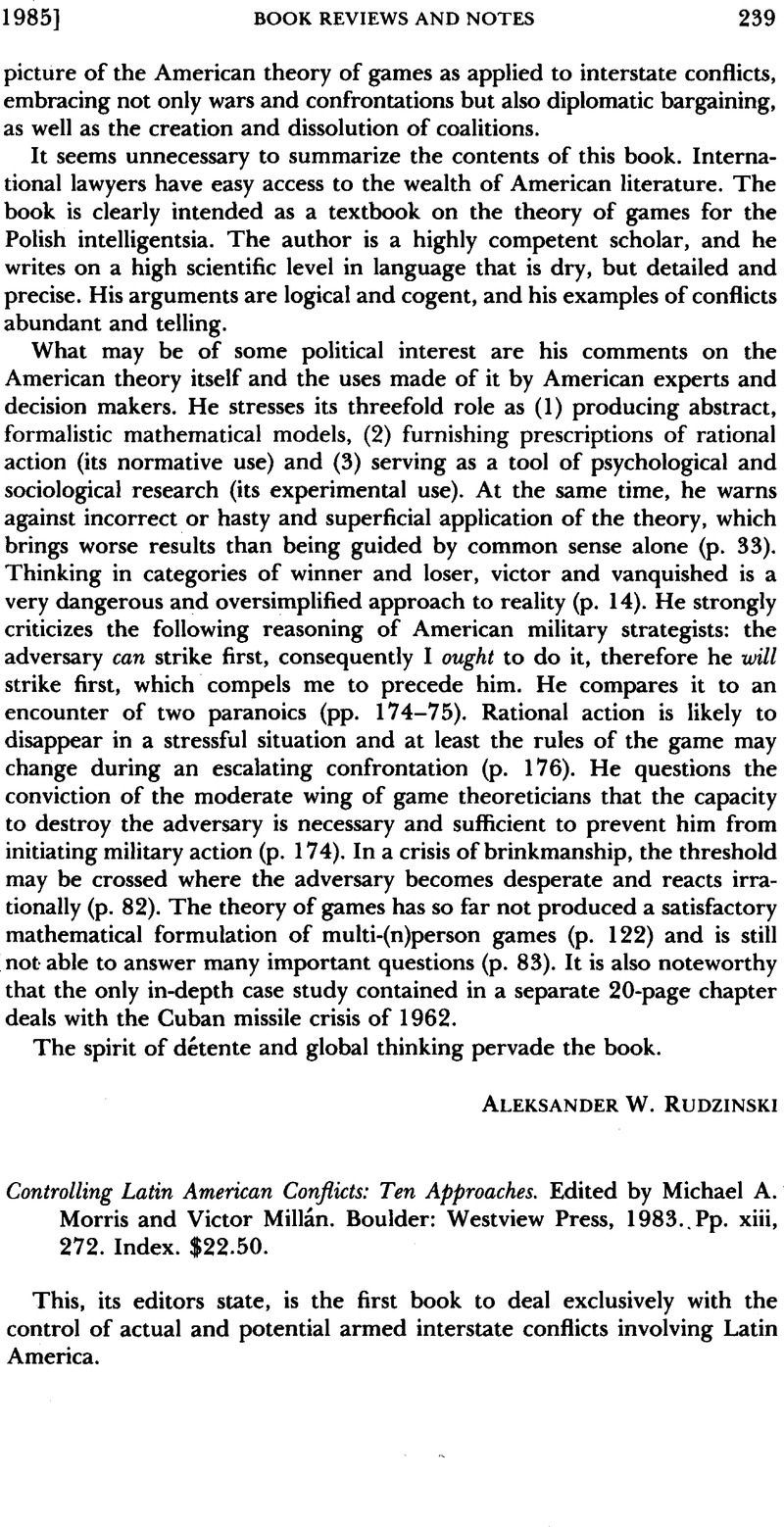No CrossRef data available.
Published online by Cambridge University Press: 23 March 2017

1 Because of overlapping subject matter, the subtitle “Ten Approaches” is somewhat misleading.
2 Since the declaration of the Monroe Doctrine in 1823, Central America and the Caribbean alone have been the target of more than 70 U.S. military operations without a declaration of war (p. 41).
3 Statesman’s Yearbook 1983–1984.
4 One cannot help but be concerned when one reads the following apocalyptic prediction attributed to Algeria’s former President Boumedienne in Le Point (Paris) of Aug. 22, 1984, at 46: “Some day millions of people will leave their poor southern homelands to invade the relatively accessible areas of the northern hemisphere to survive.”
5 One of the book’s chapters, by Professor Ruben de Hoyos of Wisconsin University, analyzes the 7 years of active negotiations preceding the outbreak of the conflict. In the Sept. 19, 1984 issue of the London Review of Books, p. 21, Tam Dalyell, a Labour M.P., warns that the Argentine military has not “gone away” and that the United Kingdom has no option but to talk to Argentina about sovereignty over the islands.
6 In his chapter on conflict control in South America, Professor Augusto Varas of the Latin American Faculty of Social Sciences in Santiago, Chile, expresses the belief that the United States under the current administration will reverse the decline of its influence in the region. But this, he believes, would in turn lead to further conflict and intraregional competition. An effective system of conflict resolution, he claims, depends on the ability of South American countries to reduce U.S. intervention in the area (pp. 82 and 84).
7 Nor, Puig points out, has the United States ratified any other regional treaty containing a degree of compulsion in jurisdictional procedures, e.g., the Treaty of Compulsory Arbitration of 1902, the Protocol for Progressive Arbitration and the Pact of San Jose de Costa Rica of 1978 (American Convention on Human Rights).
8 Citing Professor Leo, Gross’s “Conclusions” in 2 The Future of the International Court of Justice 744 (1976)Google Scholar.
9 He describes the nature of present U.S.-Cuban relations as “mutual paranoia” (p. 51).